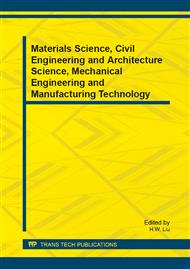p.1173
p.1177
p.1181
p.1185
p.1189
p.1193
p.1198
p.1204
p.1208
Application Investigation of the Elastomer Damper in Nuclear Power Plants
Abstract:
Vibration protection of the piping in nuclear power plants (NPPs) is critical for safety operation of NPPs. In order to improve the anti-shock ability of pipes in NPPs, the application feasibility of the elastomer damper in piping protection is investigated. The numerical analysis and the shock test are utilized to compare performances between the elastomer damper and the hydraulic oil damper, which is widely utilized in NPPs currently. The comparison results prove that the recoil force of the elastomer damper to the system is smaller. Moreover, the shock mitigation process of the elastomer damper is more smoothly. Therefore, the performance characteristics of the elastomer damper can well meet the requirements of vibration protection for pipes in NPPs. It can be used in NPPs in the future.
Info:
Periodical:
Pages:
1189-1192
Citation:
Online since:
January 2014
Authors:
Price:
Сopyright:
© 2014 Trans Tech Publications Ltd. All Rights Reserved
Share:
Citation:


